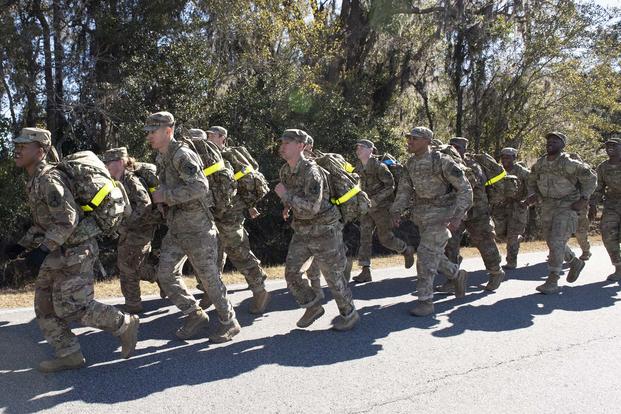It's up to each airman to make sure he or she is fit for duty and able to deploy at a moment's notice. But commanders will keep tabs on whether an airman has been identified as non-deployable and should be recommended for retirement or administrative separation, according to the Air Force's new guidance.
The service issued guidelines Tuesday for active-duty, reserve and National Guard members who are considered non-deployable. According to the memorandum, officials will immediately begin flagging those who have been unable to deploy for 12 consecutive months for possible separation.
While commanders have always had a responsibility to identify whether an airman should be separated because of non-deployability, the new 12-month rule requires greater communication with authorities such as the Air Force Personnel Center (AFPC), the Air Force Reserve Command Plans and Integration Division, and the Air National Guard Data Systems Division.
The changes include working more closely with airmen on their mental and physical fitness, the memo states.
Related content:
- Air Force Releases Deploy-or-Out Policy Guidelines
- About 126,000 Troops May Be at Risk of Separation Under Deploy-or-Out
- Air Force Still Determining How Many Face Separation Under New Policy
Per Air Force Guidance Memorandum 2019-36-01, "Non-deployable Airmen Retention Determination Policy Guidance," commanders will ensure that airmen have the right "training, equipment, time and resources needed to maintain wartime mission-capable status."
An airman's chain of command will rely on "written feedback, counseling and performance evaluations to communicate wartime mission requirements and to document an airman's failure to comply with those requirements," the document states.
The AFPC, Air Force Reserve Command Plans and Integration Division, and the Air National Guard Data Systems Division will also make monthly rosters for a unit's Force Support Squadron -- the unit that augments a sister squadron with additional support and resources -- flagging which airmen "have been nondeployable for 10 or more months."
If an airman reaches 12 months of non-deployability, the airman and his or her commander will work through the next steps to make a retention or separation recommendation.
Wing commanders, or the appropriate separation authority in the Guard or reserve, have the final say, even if someone is nearing eligibility for retirement.
A wing commander or administrative authority will "recommend approval of or deny retention determination requests" for enlisted airmen with fewer than 16 years of service on active duty or in the Guard or reserve, the memo states. If the request is denied, "there will be no further appeal and the airman will be processed for administrative separation."
Active-duty and reserve enlisted and officers with between 16 and 20 years of service -- or airmen who may be eligible for lengthy service consideration -- will be evaluated by their chain of command.
Lengthy service consideration is noted as service creditable toward retirement at the time discharge action starts, according to Air Force Guidance Memorandum to AFI 36-3208, "Administrative Separation of Airmen." These airmen, nearing retirement eligibility, are entitled to special consideration for probation upon their request.
The "Show Case Authority" in these cases will approve or deny the request, and there will be "no further appeal," according to the memo.
For enlisted or officer Guard members in the lengthy service consideration bracket, the state adjutant general or assistant adjutant general for air will make the final decision on retention determination requests.
-- Oriana Pawlyk can be reached at oriana.pawlyk@military.com. Follow her on Twitter at @Oriana0214.













